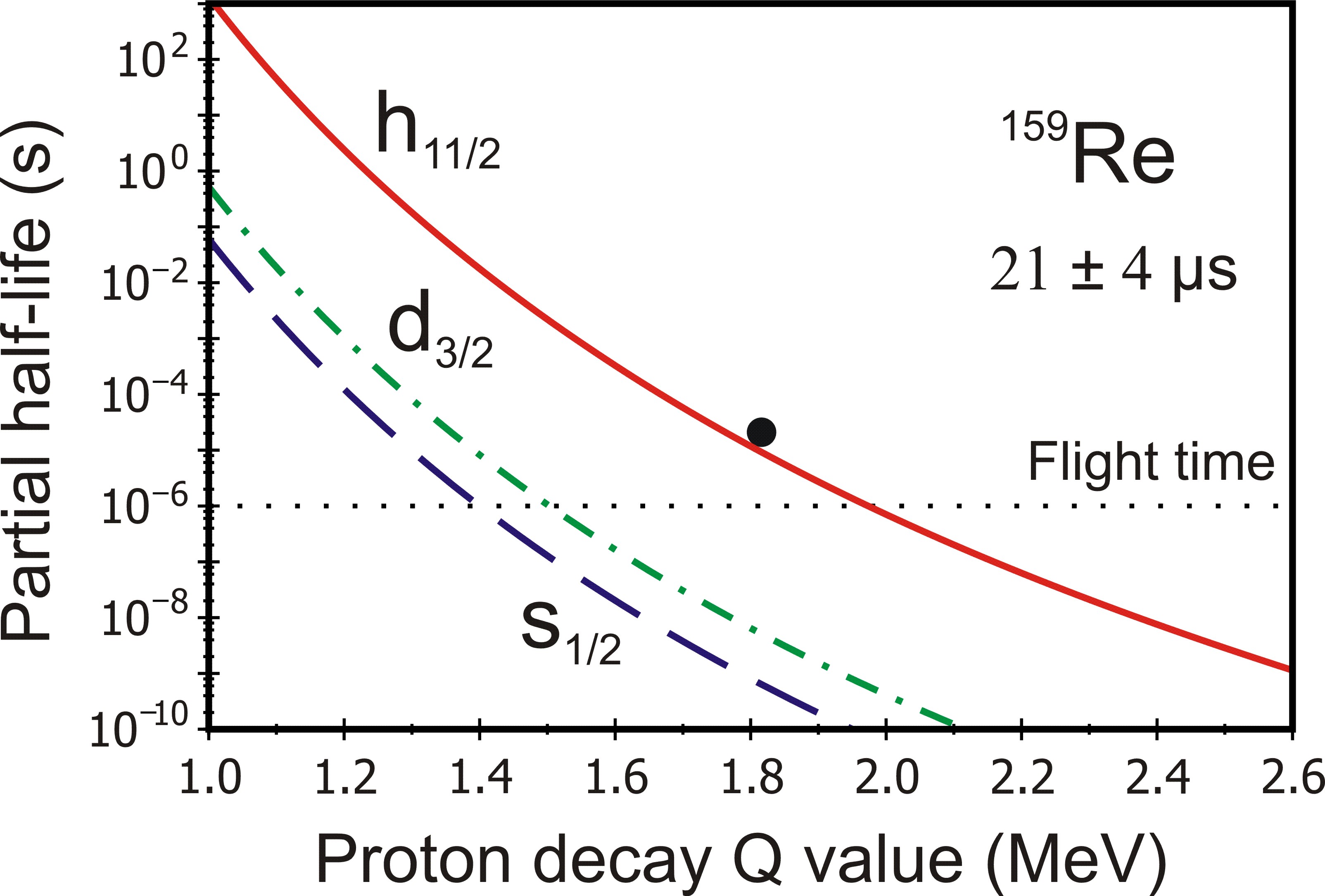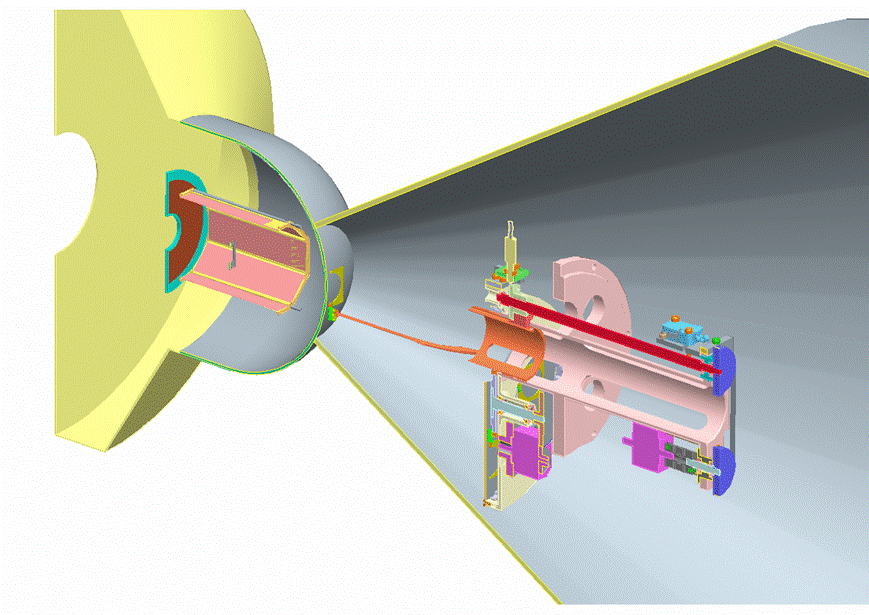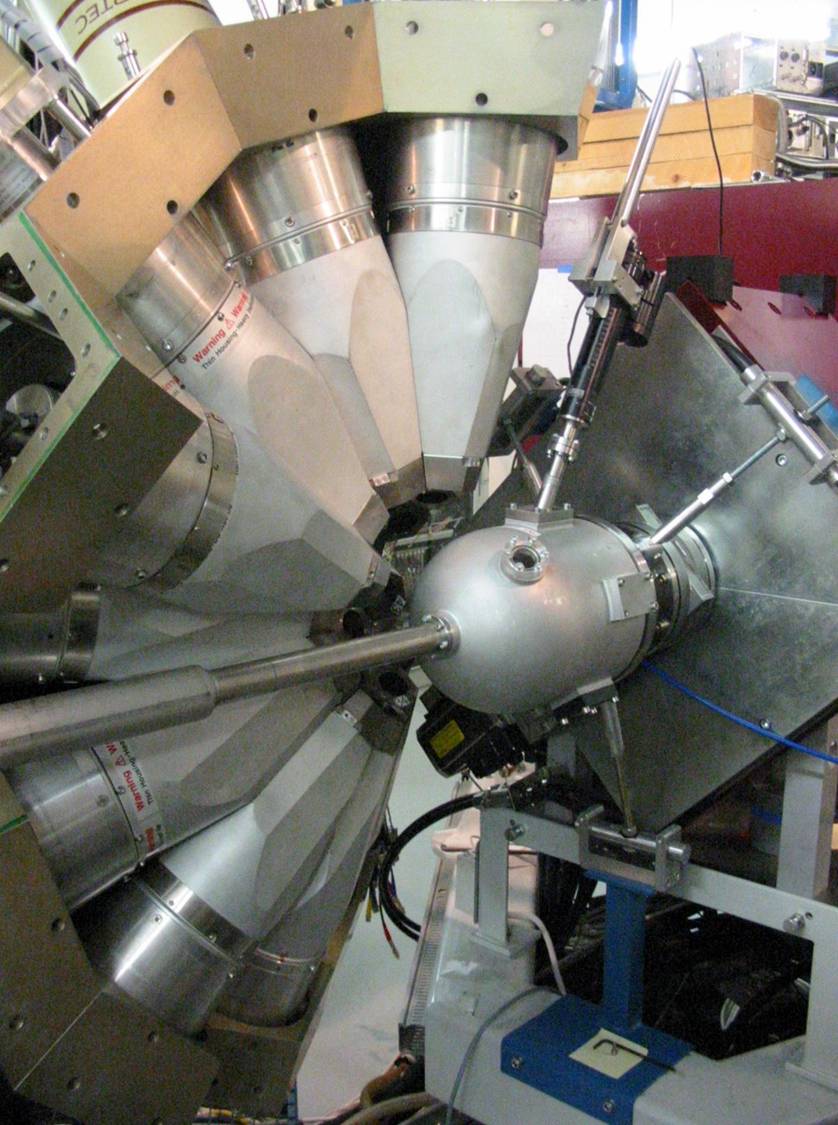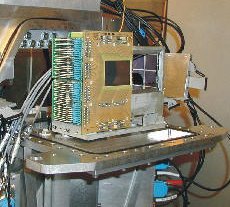

The limits of nuclear existence beyond the proton drip line
Andy Boston, Rodi Herzberg, David Joss, Paul Nolan, Robert Page and Eddie Paul
This research programme will address the key question in nuclear physics, “What are the limits of existence?”
 How heavy nuclei beyond
the proton drip line behave presents
a great challenge to the understanding
of nuclear structure, not least because it is no longer possible to ignore the
effects of unbound (continuum) states. Proton
emission is crucial
for defining the limits of observable nuclei for most odd-Z elements because of
the sensitivity of the lifetime to the decay energy and the orbital angular
momentum ℓ of the emitted proton. Once the proton drip line has been
crossed, half-lives for proton emission drop rapidly with the removal of
successive neutrons, falling below the limit of ~1ms
for current experimental techniques using recoil separators.
How heavy nuclei beyond
the proton drip line behave presents
a great challenge to the understanding
of nuclear structure, not least because it is no longer possible to ignore the
effects of unbound (continuum) states. Proton
emission is crucial
for defining the limits of observable nuclei for most odd-Z elements because of
the sensitivity of the lifetime to the decay energy and the orbital angular
momentum ℓ of the emitted proton. Once the proton drip line has been
crossed, half-lives for proton emission drop rapidly with the removal of
successive neutrons, falling below the limit of ~1ms
for current experimental techniques using recoil separators.

Recent work led by the Liverpool group has identified the proton decays of 159Re [1] and 155Ta [2], which are the lightest known isotopes of their respective elements. The new results for 155Ta are particularly significant because it is the only known proton emitter with a closed neutron shell (N=82) and is therefore a benchmark for theoretical descriptions. Work in the near future will strive to improve the precision of the 155Ta measurements and push these explorations to even lighter, shorter-lived isotopes, such as 158Re and 154Ta. In the longer term, very short–lived proton emitters (t1/2<10ns) will be investigated using LISA, which is currently under development by the Liverpool and Daresbury groups.

Proton-neutron pairing and neutron single-particle energies can also have profound effects on the relative energies of states in odd-odd nuclei. This not only affects the half-lives for proton emission but also opens up possibilities for g decays from high-ℓ to low-ℓ proton orbitals (and vice versa), which can determine whether or not a given nuclide is observable. This is exemplified by our current study of the proton emitter 160Re in which we have discovered the g decay of a ph11/2 state to the pd3/2 ground state, revealing a change in neutron orbital energies.
The proton-proton pairing interaction reduces the proton decay energy for even-Z nuclei compared with the odd-Z neighbours so that a decay still predominates up to the observation limits of current techniques. Our recent discoveries of the a decays of 105Te and 109Xe [3] provided first evidence for superallowed a decay above 100Sn, where the neutrons and protons occupy the same orbitals leading to enhanced preformation factors, while our observation of a emission from the dominant proton emitter 109I [4] disproved previous results for 105Sb proton decay, with implications for the termination of the rp-process. Planned future experiments include searching for the a decay chain of the N=Z nuclei 108Xe ® 104Te ® 100Sn that will provide a yardstick for a decay calculations and represent the best cases of superallowed a decay.
 We
recently discovered the lightest known Os and W isotopes through 161Os a
decay and plan to search for the decay of the unknown 160Os, which
will be the lightest a-emitting
Os isotope. It is expected that both the ground state and an excited 8+
state will a
decay, allowing the excitation energy of the isomer to be measured. In addition
to studying nuclei in this region above N=82, we have a vigorous programme
investigating extremely proton-rich nuclei above Z=82 focusing on the physics of
shape coexistence.
We
recently discovered the lightest known Os and W isotopes through 161Os a
decay and plan to search for the decay of the unknown 160Os, which
will be the lightest a-emitting
Os isotope. It is expected that both the ground state and an excited 8+
state will a
decay, allowing the excitation energy of the isomer to be measured. In addition
to studying nuclei in this region above N=82, we have a vigorous programme
investigating extremely proton-rich nuclei above Z=82 focusing on the physics of
shape coexistence.
Complementary information on excited states can be obtained from in-beam g-ray spectroscopy for proton- or a-decaying nuclei produced with cross sections of ³10 nb. The Liverpool group has been a driving force in the programme at Jyväskylä using the recoil decay tagging technique and published the level schemes of over 30 nuclei for the first time. The primary aim has been to probe the evolution from collective structures near the mid-shell to single-particle behaviour approaching the N=82 shell closure. Recent work has located the 8+ states (see above) in Os and Pt nuclei [5,6], established level schemes of the proton emitters 109I [7] and 161Re [8] and determined the relative energies of nf7/2, n9/2 and ni13/2 levels to test how these are affected by the proton shell occupancy [9].
In the future we will
exploit the unique
combination of UK-developed spectrometers at Jyväskylä to launch investigations
of proton and a-particle
emission from short-lived excited states in collaboration with the
Daresbury group. LISA will be used to measure the discrete energies of the emitted
protons and a
particles, while
JUROGAM will establish the initial and final states in the nuclei concerned.
The assignment to specific
nuclei will then be achieved by tagging with the daughter’s decays using
GREAT. This
will allow us to
probe the structure of highly unbound states to study the effects of coupling to
the continuum of
proton-unbound states. Theoretical support for this work will come through
collaboration with the
Surrey group.
This
will allow us to
probe the structure of highly unbound states to study the effects of coupling to
the continuum of
proton-unbound states. Theoretical support for this work will come through
collaboration with the
Surrey group.
This adventurous programme will be performed at Jyväskylä (exploiting GREAT, JUROGAM and LISA), GSI (at SHIP, where very high beam intensities are available) and Oak Ridge (using a specialized digital readout system). In the longer term our studies of extremely proton-rich nuclei will exploit FAIR using AIDA, which Liverpool is jointly developing, and HIE-ISOLDE for resonant proton scattering. The MARA separator at Jyväskylä will extend these studies to proton-rich N»Z nuclei below 100Sn, where strong p-n interactions are expected.
[1] D.T. Joss, R.D. Page et al.
Probing the limit of nuclear existence: proton emission from 159Re
Physics Letters B641, 34 (2006).
[2] R.D. Page, D.T. Joss, R.-D. Herzberg et al.
Alpha Decay of 159Re and Proton Emission from 155Ta
Physical Review C75 (6) 061302(R) (2007).
[3] S.N. Liddick, R.D. Page, D.T. Joss et al.
Fast a-decay near doubly-magic 100Sn: the discovery of 109Xe and 105Te Alpha
Physical Review Letters 97 (8) 082501 (2006).
[4] C. Mazzocchi, R.D. Page et al.
The alpha decay of 109I and its implications for the proton decay of 105Sb and the astrophysical rapid proton-capture process
Physical Review Letters 98 (8) 212501 (2007).
[5] D.T. Joss, R.D. Page et al.
Recoil decay tagging of gamma rays in the extremely neutron-deficient nucleus Os-162
Physical Review C 70 (1) 017302 (2004).
[6] D.T. Joss, R.D. Page et al.
Yrast states and band crossings in the neutron-deficient platinum isotopes Pt169-173
Physical Review C 74 (1) 014302 (2006).
[7] E.S. Paul, D.T. Joss, R.D. Page et al.
Nuclear levels in proton-unbound 109I: Relative single-particle energies and octupole collectivity beyond the proton drip line
Physical Review C 76 (5) 054301 (2007).
[8] K. Lagergren, D.T. Joss, R.D. Page et al.
High-spin states in the proton unbound nucleus 161Re
Physical Review C74 (6) 024316 (2006).
[9] A. Melerangi, R.D. Page, D.T. Joss et al.
Shape Isomerism and Spectroscopy of 177Hg
Physical Review C68 (4) 041301(R) (2003).